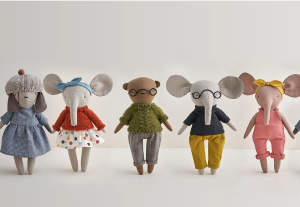Emotions shape all activity in adaptive ways. In the absence of emotional markers, decision making is virtually impossible.
– Saver and Damasio (1991)
Persuasion in design is often regarded as a subset of UX, but it goes beyond UX and the mechanics of traditional usability. It’s about understanding the emotions that influence people’s behavior and decision-making, and then acting on that information to design compelling user interactions. Persuasive design applies psychological principles of influence, decision-making in a consumer context, engagement strategy, and social psychology to every stage of the design process, and it identifies potential barriers and emotional triggers to elicit the desired actions.
UX professionals have tended to think of persuasion in design solely in the context of e-commerce sites, but the concept is just as applicable to other areas: intranets, mobile devices, gaming, services and, in fact, any product or tool that is intended to bring about positive behavioral change. Energy meters installed in homes, for example, can influence consumer behavior by making people more aware of their energy consumption and how they can reduce it. A mobile app can complement a weight loss program, and an intranet can support collaborative working practices. All of these examples require a technological system to influence behavioral change and increase engagement.
Making a decision is an act influenced by both emotion and rationality. Rationality requires justifications for following through on a decision, but no decision can be made without emotion. Emotions are both anticipatory and reactive. It’s that gut instinct guiding our intuitive, survival-based reactions that enables us to make decisions and to consider outcomes based on the decisions we make. It is necessary to understand what emotions support the desired behavior to be able to design effectively.
But how can we design to capture something seemingly as elusive as emotion when it isn’t consistent and is often capricious? Can people recognize the emotions they are experiencing and articulate what is influencing their emotions at any particular moment? Can they do this accurately?
Leveraging Psychological Principles to Persuade
Depending on the business goals and customers characteristics, the barriers and triggers to desired user behaviors will vary. Any one of six universal principles of social influence can act as a catalyst to trigger an emotional response:
- Reciprocation: We feel obliged to return favors.
- Authority: We look to experts.
- Commitment/Consistency: We want to act consistently with our commitments and values.
- Scarcity: The less available a resource, the more we want it.
- Liking: The more we like people, the more we want to say yes to them.
- Social Proof: We look to others to guide our behavior.
In addition to the principles of social influence, there are psychological principles designers can leverage to increase engagement and help people to make informed choices. Making things easy, relevant, and trustworthy by building persuasive features into the interface helps elicit desired user behaviors—ones that align with the product’s business objectives.
Such psychological principles include:
- Completeness: By nature, we feel the need to fill in gaps.
- Positive Reinforcement: Letting customers know when they are doing well will keep them engaged.
- Loss Aversion: People do not like to lose things once they have them, so alerting customers when they are about to lose out on something is an opportunity to maintain engagement.
- Saving for Tomorrow: A U.S. study has shown that people are much more likely to make a commitment to spend money in the future than to spend it today.
- The Power of Free: We are prone to go for free things, even if they come at a price later.
- Susceptible Moments: Opportunities to cross- and up-sell must be timely so that they are delivered at the point at which people are most receptive.
Take an intranet, for example, that enables employees to manage a benefits package provided by their employer. The range of benefits may vary enormously from pensions to subsidized magazine subscriptions. The intranet’s objectives are to provide content to support and increase staff engagement as they manage their benefits, while reducing demand for help desk resources by assisting staff to make informed choices. To support these objectives, the intranet must be easy to use and provide the content required to support a behavioral change. Users need to see the benefit and have the information they need to make a decision confidently in order to support management’s objectives for employees to utilize their benefits fully. Providing the information to make the initial decision and continuing to deliver information showing progress towards a goal will keep users emotionally engaged in the process of monitoring and managing their benefits.
Delivering a Compelling Brand Experience
Persuasive design opens up opportunities for brands to deliver more than just a product or service that is usable. Flow Interactive worked with easyJet to explore whether rich applications could increase the number of flights booked, build customer loyalty, and expand additional revenue streams such as hotel booking, car hire, and travel insurance.
We started with user research in our labs by asking individual target users to map out their most recent travel booking experiences. We then created lifecycle diagrams to sum up their needs, behaviors, and motivations. Our research showed that people go to multiple different sites for different information, and return to these sites many times before making a decision. This is often because users are looking for information and comparisons before making a commitment.
We identified specific design drivers, such as people’s desire for transparent price comparisons across a range of destinations and dates, as well as for information about possible destinations. We looked at how to aggregate that information on one site to meet the needs of the four different types of travelers we identified:
- Travelers who know when they want to travel.
- People who know where they want to go, but not when.
- People who do not know where they want to go, but do know roughly when.
- People who do not know where or when they want to travel.
By understanding who the users are, their specific goals and objectives, and the points in their journey where an opportunity to influence exists, a designer can implement design elements that are appropriate for each particular situation. An example of this is cross-selling at a particular moment in the purchase journey when the user will be most receptive.
We tested our initial concepts and detailed designs with target users and iteratively improved them based on feedback. Our solution included innovative use of location mapping, hotel and car hire representation, and supporting destination video. The site now offers a complete travel experience—not just an online flight-booking engine—so customers will stay engaged with the easyJet brand and website. easyJet won a Silver award for Best Flight Booking Website at the 2009 British Travel Awards.
Using Emotions to Change Behavior
User research helps us to understand users’ needs and motivations to enable us to design websites, products, and services that are easy to use. Persuasive design acts on insight gained through research, enabling us to design beyond the merely functional to create features that change users’ behavior. By understanding at what point in their journey individuals will be receptive to emotional triggers, we can ensure that design features such as images, text, and tone of voice resonate with them and persuade them to act.






